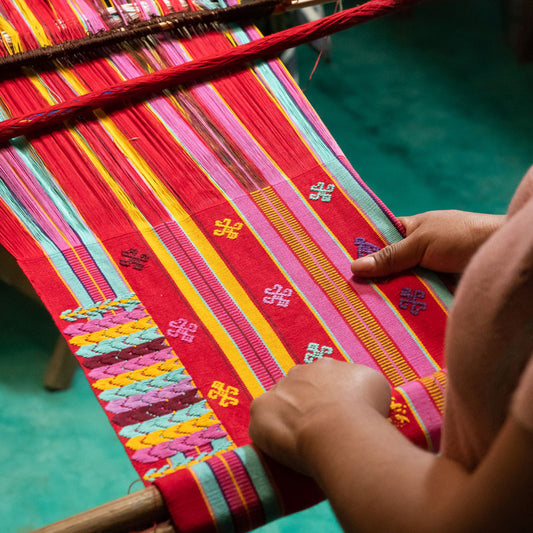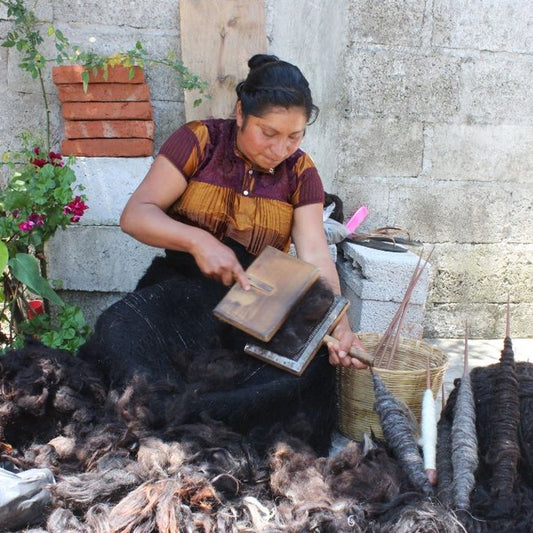To mark the launch of our Winter home edit AKOJO MARKET caught up with interiors extraordinaire, award-winning author, journalist and blogger Kate Watson-Smyth aka Mad About The House - Kate champions small businesses and is a huge advocate of handmade craft and consciously designed homes. Alongside Rukmini Patel, Kate launched the Diversity Pledge in June 2020, a three-point Pledge covering, Visibility, Opportunity and Accessibility for brands, businesses and bloggers to use as a first step to working towards a more diverse design industry.
Kate has shared with us some of her key design drivers, as well as helpful tips to budding young interior designers and writers, and where to start when shopping consciously for your home on a budget.

Kate, you are you are such an inspiration when it comes to interior decor and styling - particularly because of how you explain your thought process and emotional connection to a project. What is the biggest driver when you decide to redecorate part of your home?
I think it tends to be fairly instinctive for me, which probably isn’t that helpful. I might decide a colour I particularly like which leads me to a piece of furniture. Or it might be the other way round and start from a cushion which leads me from there. One thing I have learned about my process, if you will, is that I can’t start until it feels right. So my current office, with the gold ceiling, which was a junk room for years stayed for a junk room longer than it might have done because I hadn’t seen anything that inspired me. It was an early decision to go for a pale pink but it wasn’t until I had the idea of the gold ceiling that it all fell into place. Within 24 hours of that decision I had sold the (grey) sofa bed, bought a vintage desk on ebay and booked the decorator. So it can be very slow and mulling over in my mind for a while and then when it’s there it’s Boom all systems go.
What is your favourite room in your house?
I usually say it’s the last room I decorated so that would be the gold ceilinged office. I also love it as I haven’t been in there much this year. My sons took it over during lockdown #1, one to escape from his own room and the other as a place for online lessons and gradually it filled with all the clutter from the other rooms that we were decluttering. I’m looking forward to going back in there although changes are planned as my 17yo is going to take it over as his bedroom and I am taking his very small bedroom as my new office. So the gold ceiling will be going but I have plans for the new space….
As a career journalist and award-winning blogger, what advice can you offer to young interior designers, writers and content creators about capturing the imagination of their audience?
When it comes to blogs and online content the key is to keep it chatty and informal I think. I have always written like I talk and readers have always warmed to that friendly tone. It’s different writing for newspapers where more formality is required. For a while The Independent syndicated my blog and while it was immensely flattering (and a sort of journalism eats itself moment) I quickly came to feel that the tone of the blog wasn’t right for print. I write differently depending on the medium but I would say that my blog is like an ongoing conversation with my readers that flows on from day to day and I try to relate it, where possible, to their lives and homes so they might understand how certain interiors, which don’t look like theirs, for example, might still provide inspiration for their own homes.
Do Less Harm - your online directory is an incredible initiative to raise awareness of brands employing innovating sustainable practices such as recycling or use of ECONYL, or those with certifications such as FSC certified, and you breakdown the buzz words - "organic", "natural" and "eco". We too are huge advocates of handmade, consciously designed homeware that benefits the makers directly. We would love to know your thoughts on how to shop consciously for your home, especially on a budget?
These days I tend to start from the vintage end of the scale and many, if not most, of my furniture is either from my mother’s house, my grandmother’s house, someone else’s grandmother’s house aka eBay or even picked up from the side of the road. Beyond that, like everyone else, I am starting to ask more questions about where the wood came from, where the filling came from, where was it made and, crucially, by whom. It can be hard to get this information but only by everyone asking en masse will practices start to change.



